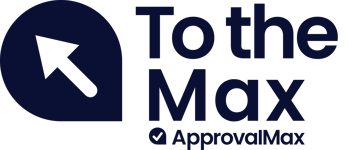
Building control without slowing down: a CFO’s daily balancing act

CFOs live in a constant trade off. You’re expected to move faster, cut risk, and stay compliant all at once. It sounds impossible, really, until you realise that control isn’t about doing more work. It’s about seeing more.
Finance operations have become a balancing act, haven't they? The teams that get it right aren’t the ones that chase every single transaction. They’re the ones that design systems where accuracy and accountability just happen by default.
According to our recent conversations with finance leaders, the biggest shift isn’t in tools — it’s actually in the mindset. Control isn’t the final step in the process anymore; it’s built in from the start. That’s how you get ahead.
• Control is built on visibility, not micromanagement.
• The best CFOs create systems that think before they do.
• Real time checks beat retrospective audits every time.
• Automation makes control possible, not optional.
• Culture drives compliance more than any policy ever will.
Why control fails when it depends on people
Every CFO has seen it. A policy written down somewhere, only to be forgotten as soon as things get properly busy. Someone approves a bill outside the process “just this once,” you know? Those moments pile up, and before long, your controls exist only on paper.
Manual control breaks because it relies on memory. When everything depends on one person remembering what to do, risk becomes personal, too. The real fix isn’t more policies — it’s structure.
Softwares like ApprovalMax replace those memory based controls with logic based ones. Approvals follow clear rules by amount, department, or supplier. Nothing moves forward until the right person signs off, and every action leaves a visible trail. That’s how you keep integrity without slowing people down.
What makes control feel “too slow”?
It’s rarely the control itself. It’s the friction around it — the emails, the waiting, the constant “who’s next to approve this” messages. It just gums up the works.
When control feels slow, it’s usually because the system isn’t connected. A team might have great software for accounting, another for reporting, and yet none for approvals. So the gap between “request sent” and “approval received” becomes a black hole of wasted time.
That’s where CFOs are rethinking their stacks. Instead of adding more layers, they’re linking what already exists. When ApprovalMax connects to Xero or QuickBooks, for example, approvals happen inside the same data flow that powers reporting. Nothing gets lost, and no one has to chase.
How can cfo’s keep agility and control aligned?
Start by redefining what agility means. It’s not about skipping checks. It’s about designing checks that move as fast as the business does.
- Set approval thresholds that make sense for your size and risk level.
- Give budget owners autonomy within defined limits.
- Use automation to enforce those limits, so you’re not relying on reminders or manual reviews.
One CFO we spoke to described it well: “We don’t move faster because we trust people more. We move faster because the system already knows what’s allowed.” That’s the sweet spot — control that happens automatically, without getting in the way.
Where does visibility fit into control?
Visibility is control. You simply can’t manage what you can’t see.
Audit trails, dashboards, and approval histories aren’t just compliance features. They’re your early warning system. The moment something looks off — a change in a supplier’s bank details, a duplicate invoice, or a skipped approval — you can act before it becomes a real problem.
ApprovalMax was designed around that principle. Every approval leaves a record. Every document shows its journey. And every anomaly is flagged. The goal isn’t to slow people down; it’s to make risk visible in real time.
How culture protects control
Even the best automation can fail if the culture around it doesn’t support it.
Finance leaders set the tone, right? When you treat compliance as a daily behaviour instead of an annual audit checklist, people follow. When you celebrate catching an error early instead of blaming someone for it, people stay vigilant.
It’s simple but powerful. Control becomes a shared responsibility instead of a policing function. In that kind of culture, automation amplifies accountability rather than just enforcing it.
Building the system once, improving it often
Strong control systems aren’t static. They evolve with your business.
Revisit your approval rules every quarter. Check if your thresholds still make sense. As teams grow or spending patterns change, so should the logic behind your workflows.
One of the biggest advantages of automation is that it’s flexible. You can adjust rules, add roles, or expand to new entities without rewriting policy manuals. The system adapts as you scale.
A calm finance function is a controlled one
Control isn’t the enemy of agility. It’s what makes agility safe.
When you can trust your approvals, your data, and your team, you don’t have to double check everything. You can focus on analysis, forecasting, and strategy — the work that truly drives business forward.
The best CFOs don’t talk about control as a burden. They talk about it as peace of mind. And in today’s finance world, that’s worth everything.
Here’s where to focus:
- Define your critical control points: What transactions cause the most risk?
- Automate, don't just digitise: Replace manual steps with logic that enforces your rules.
- Talk about the ‘why’: Explain to your team how control protects everyone, not just the company.
You've got this.
